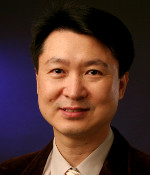
SPEAKER:
Yeong Yoo, National Research Council (NRC) Canada, Energy Mines & Environment (EME) Research Centre, Ottawa, Ontario
ABSTRACT:
V2X (Vehicle-to-X: X=Home, Buildings and Grid) testing facility has been built at the Canadian Centre for Housing Technology (CCHT) Flexhouse for small-scale testing up to 10kW. The CCHT is jointly operated by National Research Council (NRC), National Resources Canada (NRCan), and Canada Mortgage and Housing Corporation (CMHC). The integrated V2X testing system is comprised of a 15kVA grid simulator, dc-dc coupling-based integrated 2kW PV and Li-ion batteries with a 5kW inverter, off-board bi-directional EV charging, V2X-capable EV, house load with Z-wave metering, load simulators, and power analyzer for data acquisition. Raw metering data from the above-mentioned integrated V2X system with PV renewables can be collected to evaluate the reduction of local peak-power demands, access grid service value potential, and perform simulation and validation of proposed energy management and control strategies in order to verify potential benefits of V2H, V2B, and V2G. This unique facility enables NRC to demonstrate EV batteries and repurposed EV batteries in Vehicle-to-Grid and stationary applications and to evaluate its implementation in the Canadian environments and electricity markets.
The energy stored in electric vehicles (EVs) would be made available to commercial buildings to actively manage energy consumption and costs in the near future. These concepts known as vehicle-to-building (V2B) and vehicle-to-grid (V2G) technologies have the potential to provide storage capacity to benefit both EVs and buildings owners respectively, by reducing some of the highest cost of EVs, buildings’ energy cost, and providing reliable emergency backup services. In this study, we considered a V2B/V2G storage system simultaneously for peak shaving and frequency regulation via a combined optimization strategy which captures battery state of charge (SOC), EV battery degradation, EV driving scenarios, operational constraints and uncertainties in building load, V2B/V2G patterns and regulation signals. Under these assumptions, we showed that the electricity usage/bill can be reduced. A multi-objective control policy is described and shown to achieve a considerable performance. Comparative analysis with previous works that used battery storage systems for either peak shaving or frequency regulation showed that EV batteries can also achieve superior economic benefits under controlled SOC limits.
SPEAKER’s BIO:
Mr. Yeong Yoo with MSc in ceramic engineering has led many Solid Oxide Fuel Cell (SOFC), Hydrogen Storage, Bioenergy and Energy Storage (ES)-related projects as a project leader and Senior Research Officer at National Research Council Canada (NRC). He has over 25 year experience in a variety of ES components and its integrated systems, including Ni-Zn/Ni-MH/Li-ion/Li-polymer batteries for portable and electric vehicle (EV) applications at Samsung in Korea and SOFC, direct ammonia fuel cells, hydrogen storage, catalytic syngas clean-up system, integrated gasification and CHP systems, abuse testing of Li-ion EV batteries, performance validation of ES system, and Vehicle-to-X technologies at NRC. He has published over 44 journal and conference proceedings papers with over 440 citations and filed 2 US patents, 6 US provisional patents, and 17 Korean patents. In addition, he has managed many collaborative R&D projects with Natural Resources Canada (NRCan), DND-DRDC, Transport Canada, Global Thermoelectric Inc., McMaster U, Queen’s U, RMC, Laval U, University of Waterloo, Carleton U, the Hydrogen Research Institute (HRI) at UQTR in Canada, and NSC-Taiwan etc. since 1999.
